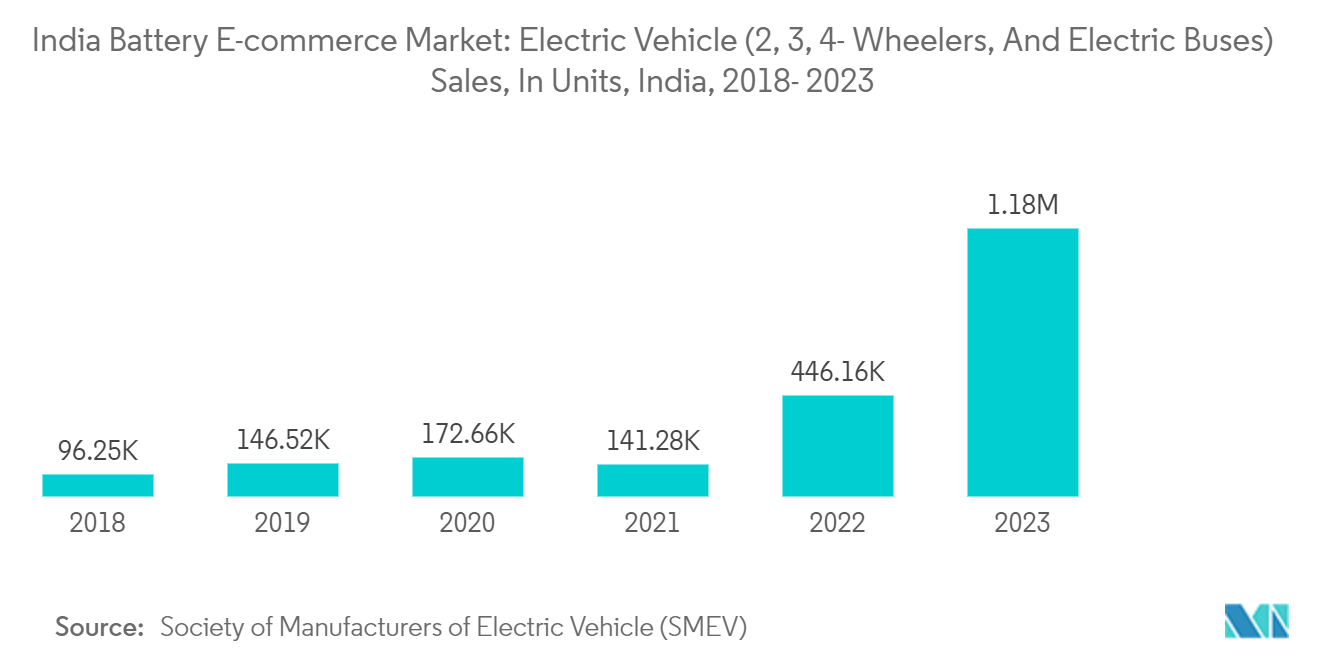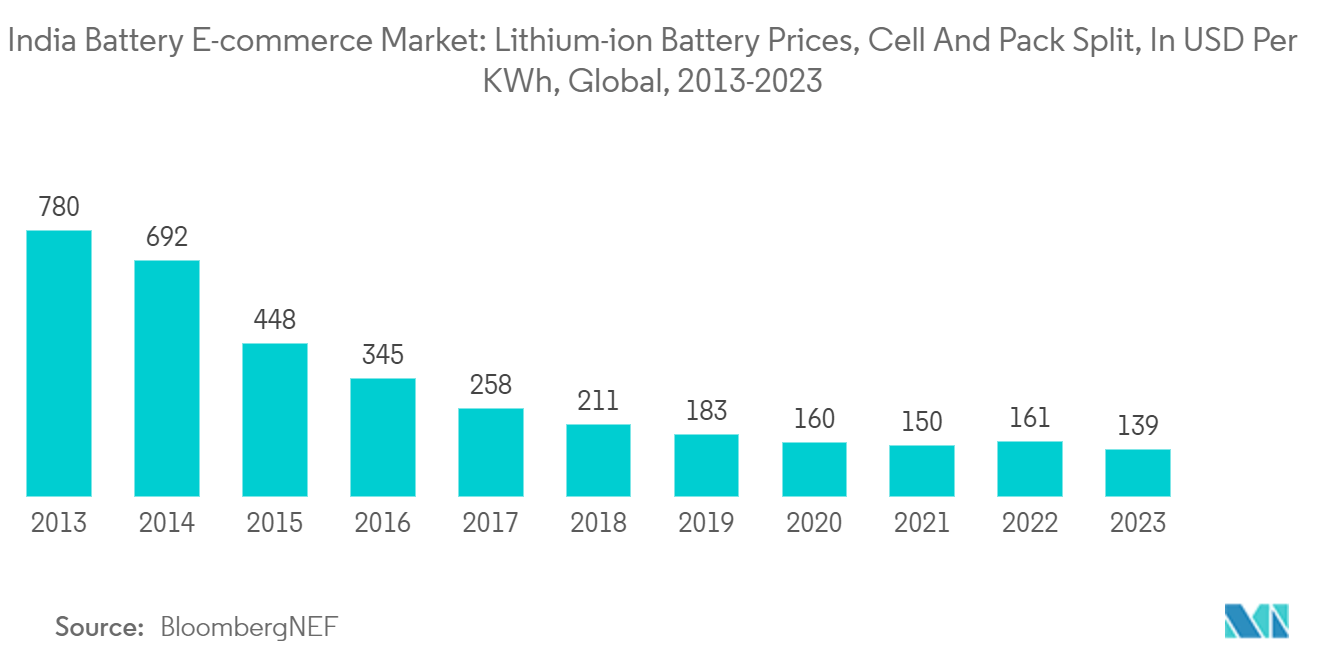Market Trends of India Battery E-commerce Industry
Increasing Adoption of Electric Vehicles
- As of 2023, India was among the world's top five emitters of CO2. To mitigate the air pollution problem, the government has taken the initiative to implement policies that are favorable to increasing the EV fleet count on the road.
- According to the Society of Manufacturers of Electric Vehicles (SMEV), the number of electric vehicles sold in 2023 was 1,179,958. In 2023, the country recorded the highest sales of battery electric vehicles, with 1.17 million units. A similar trend in India is expected to continue, considering the inclination of customers toward e-mobility.
- The Government of India emphasizes that entities planning to set up charging stations may not require licensing from the ministry. The Indian government set a target of EV sales accounting for 30% of private cars, 70% of commercial vehicles, and 80% of two and three-wheelers by 2030. These initiatives are expected to drive the country's demand for batteries. As of March 2023, there were 6,586 operational public EV charging stations (PCS).
- India is targeting the increase in the uptake of electric vehicles (EVs) through a subsidy program called the Faster Adoption and Manufacturing of Electric Vehicles (FAME) by 2030, which was introduced in 2015. The second phase of the policy, FAME‐II, was approved in 2019, with a budget of USD 1.4 billion for three years. Subsidies are available only for vehicles with advanced battery chemistries, such as lithium-ion, rather than lead‐acid, which makes up most of the electric two/three‐wheelers sold. The FAME‐II aims to increase the number of electric buses, two‐/three‐wheelers, and cars, which is expected to increase the demand for lithium-ion batteries.
- Multiple state governments, such as Gujarat, Telangana, Andhra Pradesh, and Karnataka, are offering capital subsidies for setting up lithium-ion giga-factories in the country by providing land, power, and water for the li-ion battery manufacturing units at a concessional rate. These efforts, combined with a growing awareness of environmental sustainability, encourage consumers to choose electric vehicles, boosting the demand for batteries through e-commerce channels.

The Lithium- Ion Battery Segment to Dominate the Market
- Lithium-ion batteries are gaining more popularity than other battery types due to their favorable capacity-to-weight ratio. Other factors boosting its adoption include better performance, better shelf life, and a decreasing price.
- The price of lithium-ion batteries is usually higher than other batteries. However, major players across the market have been investing to gain economies of scale and R&D activities to enhance their performance, increasing the competition and, in turn, declining lithium-ion battery prices.
- Lithium-ion battery manufacturers are focusing on reducing the cost of Lithium-ion batteries. The price of lithium-ion batteries declined steeply over the past 10 years. In 2023, an average lithium-ion battery was valued at around USD 139 per kWh. It witnessed a decrease in the price of more than 85% in 2023 compared to 2010.
- As lithium-ion battery prices decline, electric vehicle (EV) ownership becomes more affordable for consumers in India. This increased affordability directly contributes to the growth of the EV market, subsequently driving the demand for batteries.
- The two principal reasons for the drastic cost decline are the steady improvement of battery performance achieved through sustained R&D aimed at improving battery materials, reducing the amount of non-active materials and the cost of materials, improving cell design and production yield, and increasing production speed.
- BloombergNEF anticipates that battery costs will decline again in 2024 as more extraction and refinery capacity become operational and lithium prices begin to ease. The average pack price will drop below USD 100/kWh in 2026.
- Hence, declining cost, along with its advantages over the other type of batteries like lead-acid, the segment is expected to dominate the market in the forecast period.


